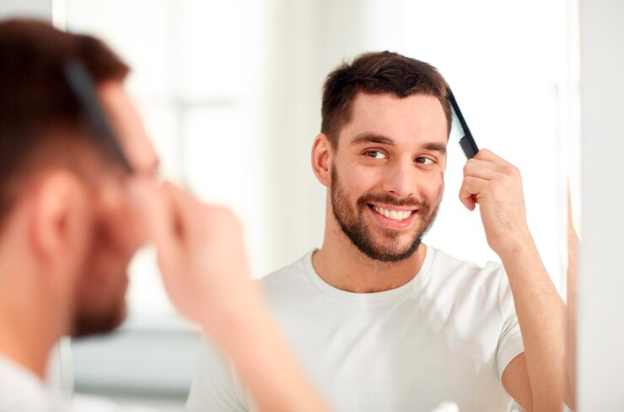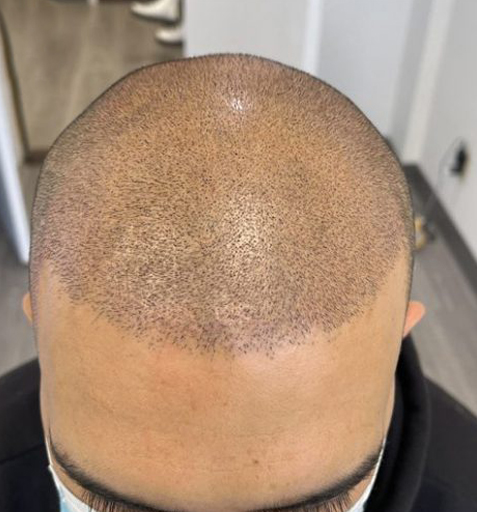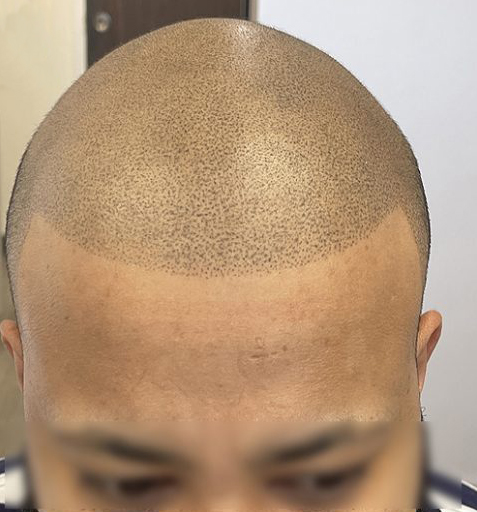
Table of Contents
Just imagine waking up to looking in the mirror and loving the calm and confident reflection staring back at you. That is the promise scalp micropigmentation offers. But hold on! The treatment is only the first half of your transformation.
The healing period plays a massive role in how great your results look. Rushing or skipping post-care may ruin what could have been a perfect outcome.
You don’t need fancy tricks or potions to recover from the procedure. Simple, natural methods can help your scalp heal faster and better.
Are you excited to know how? With these SMP healing tips, we will make sure those stunning results are not hidden!
Table of Contents
After your SMP session, your scalp will require some time to heal. Healing after hair micropigmentation treatment takes time and care. Your body will transform during the first few days by adding additional layers of skin over these areas. Expect some tightness, redness, and light scabbing. Don’t worry that is completely normal.
In order to get those results, you need to pamper your scalp with proper care.
Adhering to the guidelines below will ensure that healing occurs more rapidly and the hairline appears smoother and sharper.
Maintaining hygiene is critical for the initial days after the SMP treatment. Lack of gentleness can harm healing.
Refrain from washing the scalp for the first three days.
Following the first three days, use a mild, scent-free soap to rinse the scalp. Do not use exaggerated soaps or scrubbing methods, as they can be abrasive.
Gentle soaps simplify things and ensure that healing takes place without disturbing the pigment balance.
Hydration is crucial to obtaining fresh skin to flush out harmful components. Moreover, keeping the skin hydrated will also guarantee a bouncy skin recovery.
Water makes its importance explicit. Not only does it require water to stay hydrated, but the skin needs hydration for skin servicing tasks, too.
Scalp itchiness is standard for many but refraining from scratching is highly advised. Defacing skin with fingers can result in harmful scab dragging, which might alter extraction slump balance.
Consider the following natural soothers to scratch itch comfortably:
Impure but fragrance-free aloe vera gel soothes the area and can be applied. Scalp can be hydrated using fresh nut, non-greasy lighter moisturizer, which offers longevity items.
Sunlight can delay recovery and lead to fading. Those UV rays are dangerous! Just like you would take care of your favourite pair of shoes, be careful how you protect your scalp.
Wherever you go outside, make sure to wear a lightweight, breathable hat (not overly tight ones that will rub against the treated area).
After the first week, apply sunscreen. Make sure you select one with SPF 30 or higher and one that is safe for the skin.
Excessive sweating can affect the treated area. For the first 5 days, avoid any intense physical activities such as exercise, running or hot yoga. If you need to be active, switch to light stretches or a gentle walk.
Your body heals when it is rested and free of stress. During this period, make sure to sleep a minimum of 7-8 hours. A good night’s rest accelerates skin rejuvenation and reduction of inflammation.
After the initial 4-day period, add a nourishing, non-greasy moisturizer to your scalp care. Keeping skin hydrated will lessen dryness, flaking and itchiness.
Seek out moisturizers containing natural ingredients such as shea butter or avocado oil.
Post SMP treatment, your diet can have an impact on your healing. Antioxidants and vitamin-rich foods will aid in recovery.
Incorporate fruits with vitamin C, such as oranges and strawberries, as well as omega 3’s from salmon and walnuts into your meals.
Highly sugared, overly processed, and salt-dense foods should also be avoided as they may hinder progress.
Small scabs that are forming and healing on the skin are common. Make sure never to pick, poke or scratch! Scab picking can lead to uneven patches due to pigment loss.
Aloe vera is an ideal remedy, as well as a lightweight moisturizer for those grumpy scabs.
Scab and sore healing involves action and inaction at the same time. Here is a reminder of what to avoid in order to stay on track:
Following these “don’t” guidelines will allow for an easier recovery and stunning results.
The following outlines your expectations on a week-to-week basis after each scalp micropigmentation procedure
Results are attributed to a person’s patience and slightly altered healing times. Also, learn in detail: How Long Does Scalp Micropigmentation Take to Heal?
Many people have benefited significantly from scalp micropigmentation. However, optimal results can only be achieved while following the proper post-care guidelines provided.
Incorporating these natural measures will result in optimally undetectable and swift recoveries that can last a lifetime.
All of the efforts you make, no matter how small at this juncture, will reflect on your unabashed exuberance and confidence later.
Take it day by day, treat your scalp like a royal and remember the golden rule of healing: no shortcuts but endless love!






© 2024 HAIRTATTOO.CA | Scalp Micropigmentation & Trichology Centre
